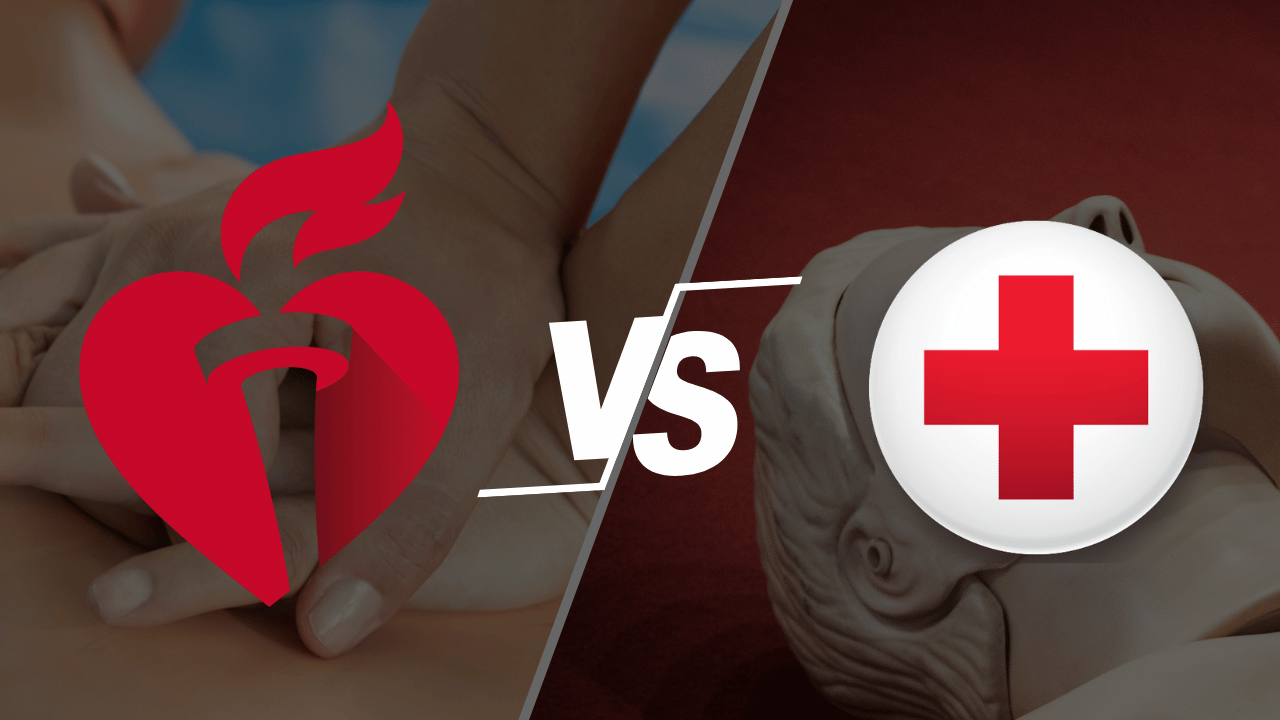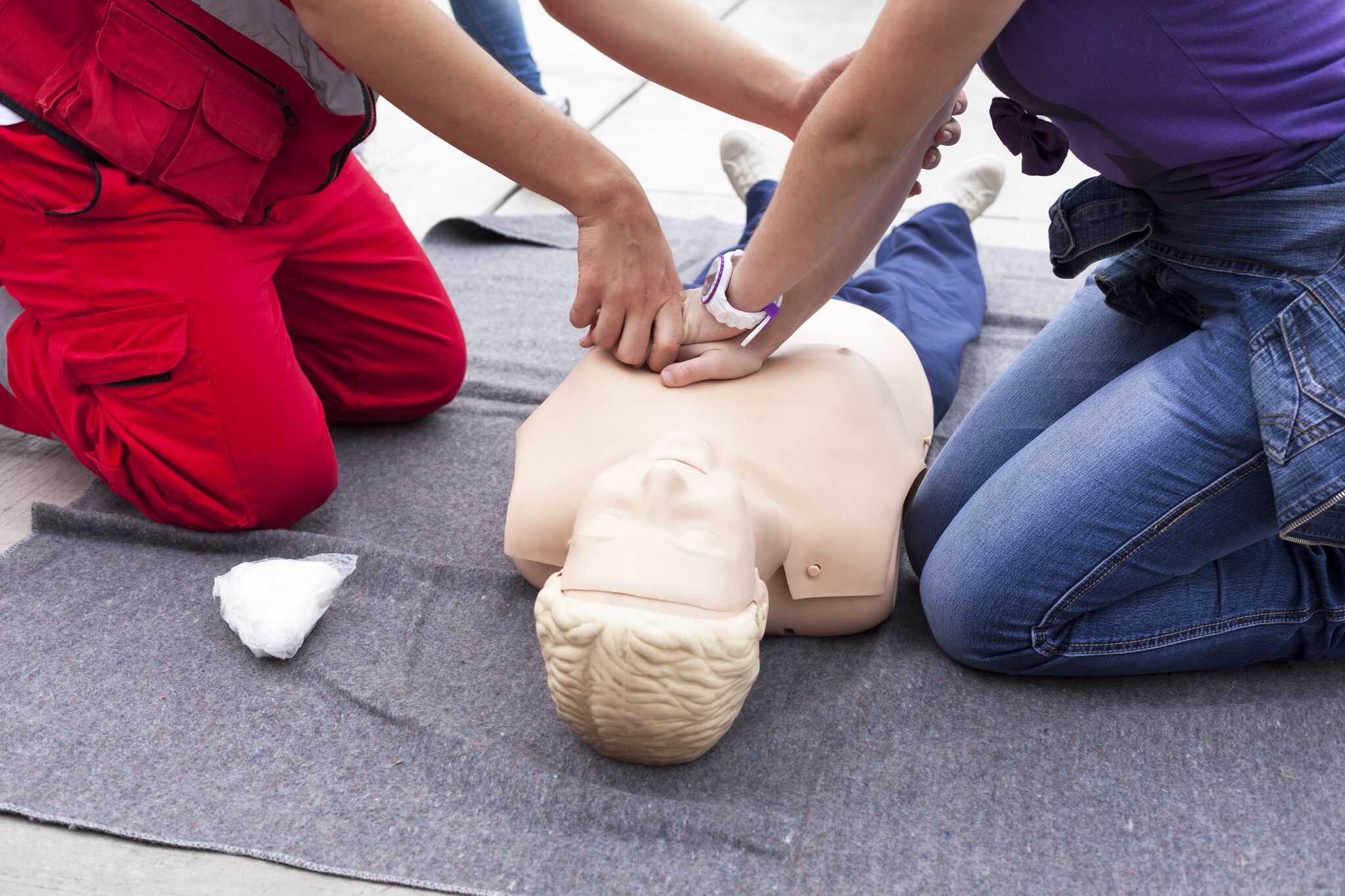Knowing CPR can mean the difference between life and death during emergencies. Whether you’re a healthcare professional, educator, or simply someone who wants to be prepared, getting CPR certified is essential. The American Heart Association (AHA) and the American Red Cross are the two most recognized names in CPR training—but while they share the same mission, their courses have distinct differences.
This guide will break down the key factors of AHA vs Red Cross CPR certifications, helping you decide which certification is the best fit for your needs.
Curriculum Breakdown
AHA CPR Curriculum
The American Heart Association is widely known for its evidence-based CPR programs, which are updated regularly using the latest medical research. Their courses are tailored for healthcare professionals and advanced responders. Popular programs include:
- Basic Life Support (BLS): Designed for medical personnel requiring CPR certification in professional settings.
- Advanced Cardiovascular Life Support (ACLS) and Pediatric Advanced Life Support (PALS): Specialized training for managing complex medical emergencies.
- Family & Friends CPR: A community-oriented course for general awareness (non-certification).
Red Cross CPR Curriculum
The Red Cross focuses on hands-on, practical training for both workplace and community audiences. Their offerings include:
- Adult, Child, and Infant CPR/AED: Ideal for schools, offices, and general public needs.
- First Aid with CPR: Combines basic first aid with emergency response training.
- Babysitting and Disaster Training: Unique certifications providing additional skills beyond CPR.
While both programs meet recognized CPR guidelines, AHA is better suited for those in healthcare or clinical roles, while the Red Cross is ideal for workplaces and community needs.
Teaching Methods
AHA Teaching Approach
AHA programs emphasize precision and scenario-based training. Their courses include:
- Evidence-backed lessons grounded in real-world data.
- Scenario-based exercises that simulate medical emergencies.
- Focus on mastery through rigorous skill assessments.
Red Cross Teaching Approach
The Red Cross blends interactive learning with hands-on practice. Their style includes:
- Role-playing simulations for real-life readiness.
- Visual aids and interactive tools for easy comprehension.
- Strong focus on building confidence in emergency response situations.
Both organizations offer flexible training options, including in-person, blended learning (online + hands-on), and fully online modules. Your choice may depend on whether you prefer data-driven precision (AHA) or interactive, practical scenarios (Red Cross).
Certification Requirements and Passing Standards
One key difference between these organizations lies in their certification standards:
- AHA: Requires a minimum passing score of 84% on exams, reflecting their rigorous approach to professional training.
- Red Cross: Requires a passing score of 80%, making it slightly more accessible for non-medical participants.
If you’re pursuing a healthcare career, the higher standard set by the AHA aligns closely with clinical expectations. However, if you find yourself struggling to pass the AHA courses, don’t be discouraged—there are plenty of resources to help. We provide actionable tips and support to guide you toward success in your certification efforts.
Certification Duration
How long does each certification last?
- AHA Certifications: Typically valid for two years across all courses.
- Red Cross Certifications: Most are valid for one year, though some extend to two years for professional courses.
For those with limited time to renew, AHA’s longer certification period may be a more practical choice.
Recognition Across Industries
AHA Certification
Highly regarded in the healthcare sector, AHA certifications are often mandatory for hospital staff, EMTs, and other medical roles. Their emphasis on advanced training makes them the gold standard for clinical settings.
Red Cross Certification
Red Cross certifications are widely accepted across schools, offices, community programs, and non-medical roles. Employers in non-clinical industries often recognize their programs as sufficient for workplace emergency preparedness.
Pro Tip: Always check your employer’s requirements before enrolling. Some jobs may specify a preference for AHA or Red Cross certifications.
Extra Features and Benefits
AHA Added Value
- Access to cutting-edge medical research.
- Advanced certifications like ACLS and PALS for healthcare providers.
- Tools like the “CPR in Schools Training Kit” to teach students life-saving skills.
Red Cross Added Value
- Disaster preparedness and babysitting certifications.
- Lifeguard training for pools and recreation centers.
- Community outreach programs that build emergency readiness.
These additional offerings can make one program more appealing depending on your goals beyond basic CPR training.
Costs and Accessibility
Pricing varies by course level and training method:
- AHA: Costs range from $50 to $200, depending on whether you’re taking basic CPR or advanced certifications like ACLS.
- Red Cross: Courses typically cost $70 to $150. They’re often more affordable but sometimes charge extra for certification cards or training materials.
Both organizations offer online modules for added flexibility, making CPR training accessible for even the busiest schedules.
Key Factors to Consider
Here’s a quick checklist to help you choose the right certification:
- Job Requirements: Healthcare professionals should lean toward AHA certification.
- Learning Style: Prefer precise, research-backed methods? Choose AHA. Prefer interactive scenarios? Opt for the Red Cross.
- Time Commitment: AHA certification is valid for two years; Red Cross may require yearly renewals.
- Budget: AHA certifications tend to have a higher price tag due to their advanced nature.
- Additional Benefits: Look at extras like disaster training (Red Cross) or access to medical research (AHA).
Why CPR Training Is Vital
A staggering 350,000 cardiac arrests happen annually outside of hospitals in the U.S. Knowing how to perform CPR can significantly increase survival rates. Whether you’re a parent wanting to protect your family or a healthcare professional saving lives daily, CPR training empowers you to act confidently when seconds count.
Choosing Your CPR Certification with Confidence
When comparing AHA and Red Cross certifications, your decision ultimately depends on your career path and personal needs. If you’re pursuing a role in healthcare or value research-backed training, AHA is the way to go. If your focus is community service or workplace readiness, the Red Cross offers a practical and budget-friendly solution.
Need CPR certification in Northern California? Enroll in a course with Safety Training Seminars at one of our 65+ locations. Get certified and be ready to save lives when it matters most.
Red Cross vs AHA CPR FAQs
Which certification is more widely recognized?
Both AHA and Red Cross certifications are widely accepted, but AHA is often preferred in medical settings.
Does one certification cost more than the other?
Yes, AHA certifications are typically more expensive due to their advanced resources and training.
How long does each certification remain valid?
AHA certifications are valid for two years, while Red Cross certifications may require yearly renewals, depending on the program.
Is the training style different?
AHA focuses on evidence-based, precise training methods, while Red Cross incorporates more hands-on, scenario-based learning.
Can I transition from one certification to the other?
Yes, you can switch between certifications as long as the new training meets your workplace requirements.
Does either provide online certification?
Both AHA and Red Cross offer online components, but most require an in-person skills assessment for full certification.
Which is better for healthcare professionals?
AHA is often preferred in medical fields due to its alignment with advanced clinical guidelines.
Are there additional benefits to choosing one over the other?
Red Cross may offer disaster preparedness training, while AHA provides access to cutting-edge medical research and guidelines.








